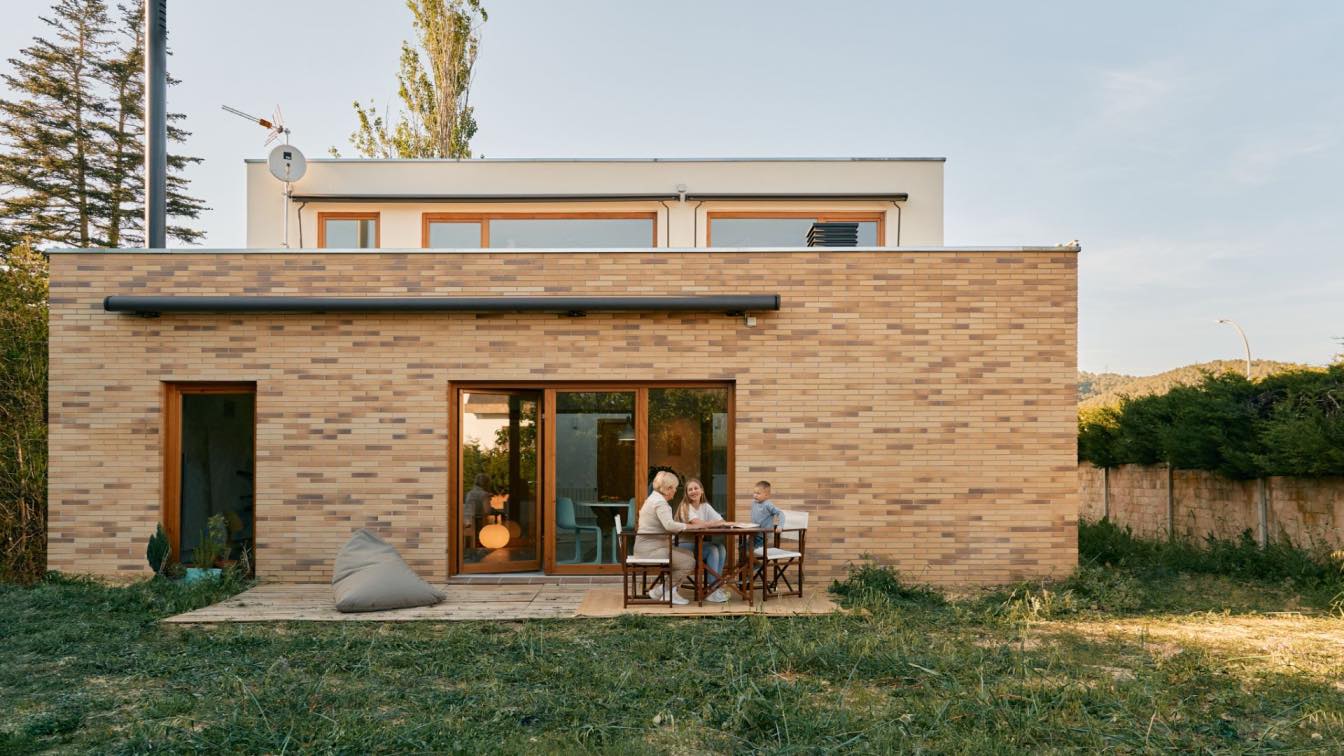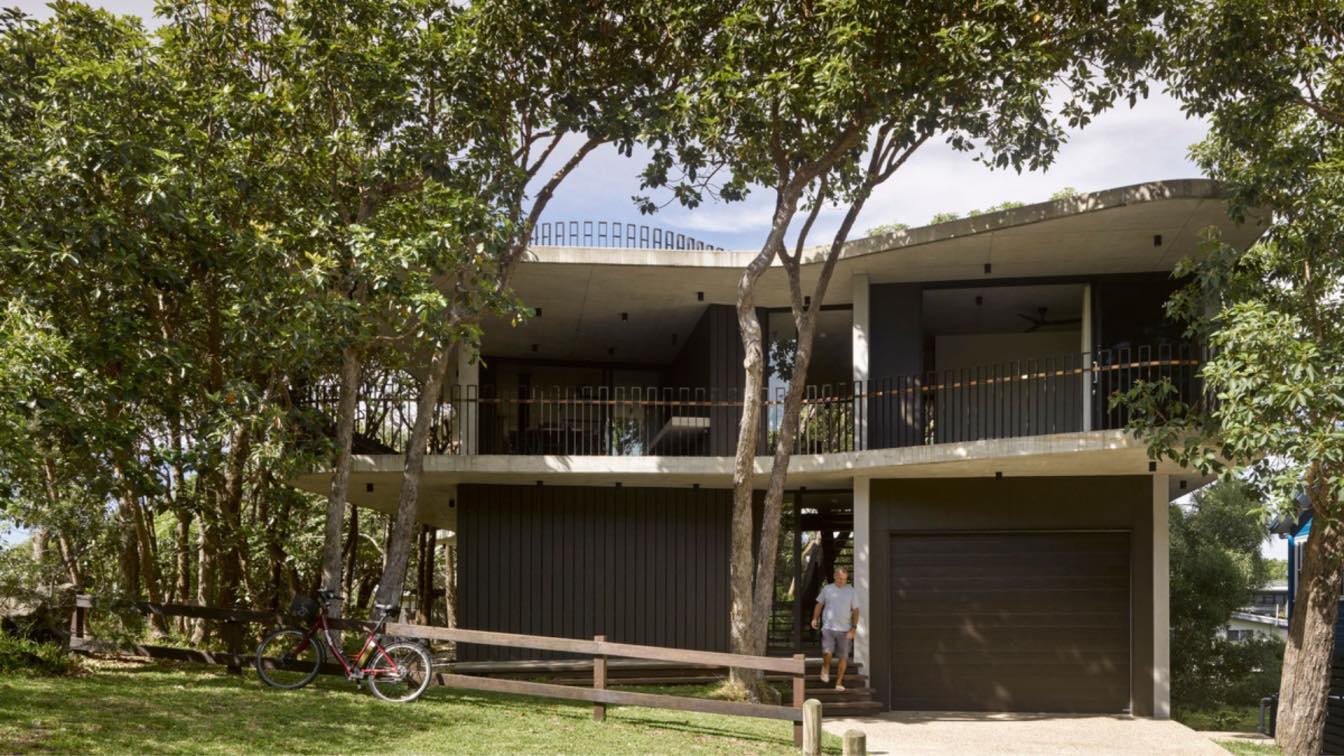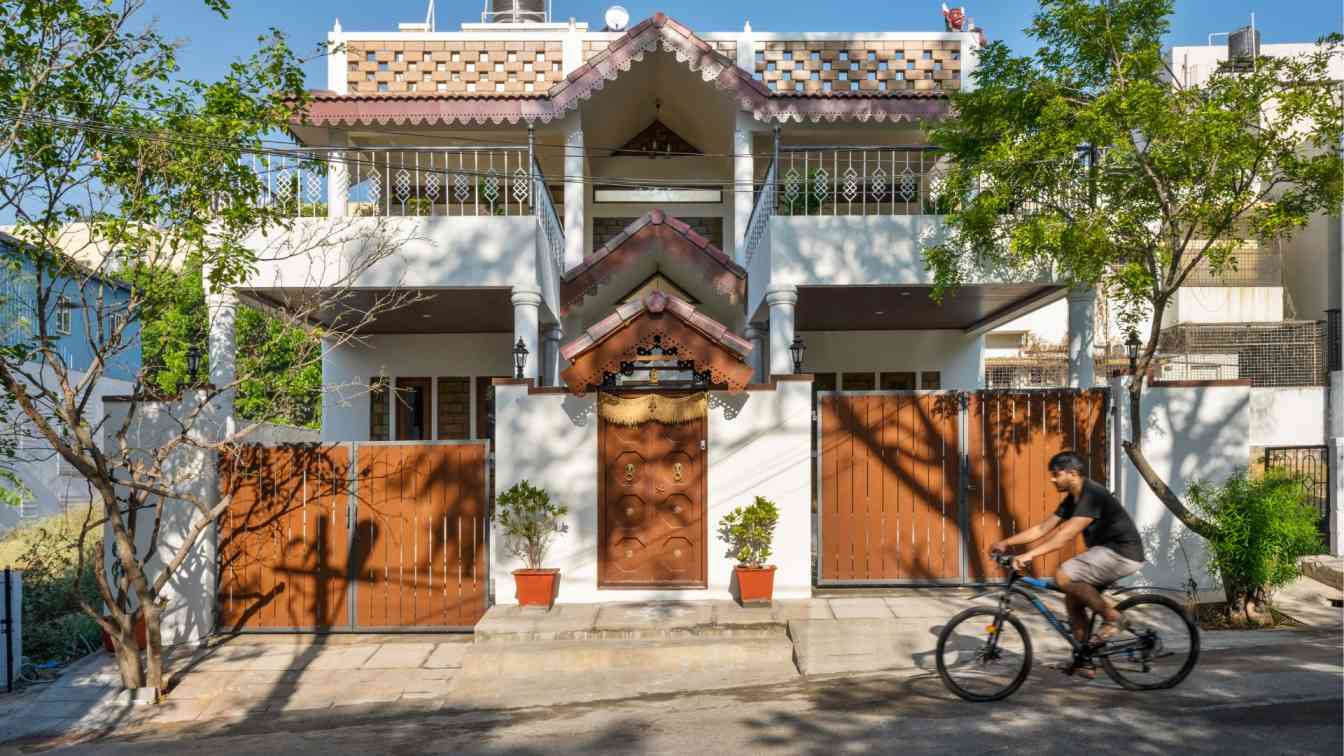Slow Studio: The aim of the project is to achieve a single-family house with zero consumption and high health standards through bioclimatic strategies. The rooms of this passive house are organized around a bioclimatic atrium, a double height central space that accumulates heat thanks to an upper south opening and allows the rooms in the north area to be tempered and to generate cross ventilation.
In order to optimise the climatic performance of a limited surface area, we decided to opt for a compact square floor plan, which has the advantage of avoiding thermal losses in the façades but the disadvantage of not allowing direct sunlight from the south in the rear rooms.
For this reason, a central space is proposed that captures light and heat and is designed as a covered atrium with openings to the south in the upper part that rises above the roof. In this way, the atrium generates a second facade for solar collection and stores hot air that we will use in our favour for the ventilation of the house.
In this way, we achieve a central space with stratified air (hot air rises) which is also a solar collector in its upper part and has a multipurpose program, being able to be used as an extra living room, dining room or simply a free space with access to night areas.

In addition, clients expressly request to have views to the north and for this the atrium has a small loft accessible with a library-type staircase that can be moved along the atrium or hidden when not necessary. The construction system is based on a double wall of interior gero and exterior exposed brick with insulation between them.
In the access area, the exposed brick wall generates a semi-open latticework that highlights the access to the house. The solar protection of the openings is carried out by external textile blinds.
To generate hot water and heating on cold winter days we use a biomass boiler with pellets that feeds a system of conventional radiators. The air renewal of this house is carried out through the central atrium by means of aerators that introduce air from the highest point of the gallery and whose extraction is located in the wet areas of bathrooms and kitchen.























































